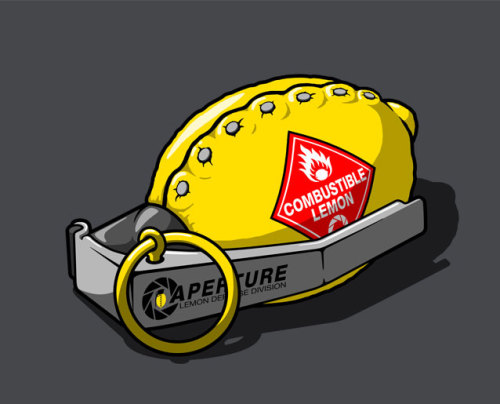If you have, welcome to the dark side of Canada's criminal underworld.
 |
| Yum! |
Looking deeper into the Criminal Code, there's another fun point that even if you're betting with a legitimate lottery corporation (like, say, SportSelect), you cannot bet on the outcome of a single game (Section 207 (4) (b)). This was recently debated in the House of Commons where they tried to scrap the rule, but apparently the Senate might be fighting back on this one for a change.
These rules force legitimate lotteries and betting houses to combine bets. SportSelect, for instance, specifies that gamblers have to bet on a combination of between 3 and 6 games, where they will only win if they get all of their predictions correct.
This has a severely negative effect on the gamblers, because even if they are perfectly correct about the probabilities of an event happening, it will happen so much less frequently that they may not be able to afford to keep playing.
For example, let's take a look at the odds that SportSelect is offering for this weekend's hockey games. There are 13 games going on tomorrow, representing the vast majority of teams in the league. Taking a look at these games shows that the average payout for a team to win away is 2.28, win at home is 1.83, and for the games to go to a shoot-out is 5.73. In fact, 11 out of the 13 games were predicted to be won by the home team (but that's not important right now).
Since these are the first games of the season, it's likely that these odds are pretty much more or less pure speculation - lots of these teams haven't even played together yet. That makes it not inappropriate to compare the odds to, say, an average of historical games, and may represent an 'average' set of games.
Which I did.
Last year, which was a regular season, had 1,230 games played over the season. Of these, 24.4% went into overtime, and 60.3% of those went to a shoot out - meaning in total 14.7% of games went to shoot out. Of the rest, an impressive 57.7% were won by the home team (oh ok that previous thing now does look important...). Similarly, the previous year had 12.1% shoot out games, and 53.7% of the rest were won at home.
So let's say on average any given game has a 13.4% chance of going to shoot out, a 48.2% chance of getting won by the home team outright, and a 38.4% chance of going to the away team. If we pretend that those SportSelect odds represent a more or less 'average' set of games, we can compare them like this:
| Outcome | Odds | Payout | Expected Result |
| Home Win | 0.4817 | 1.8277 | -12.0% |
| Away Win | 0.3841 | 2.2769 | -12.5% |
| Shoot Out | 0.1341 | 5.7308 | -23.1% |
So there you go - if you knew nothing else about a game other than long term trends, you'd expect to lose between 12 and 23% of your money on any given bet. That would put the SportSelect odds somewhere between a casino game and a lottery in terms of expected money lost.
But wait, it gets worse. Watch what happens when you have to bet on at least three games:
| Outcome | Odds | Payout | Expected Result |
| 3 Home Wins | 0.1118 | 6.1053 | -31.8% |
| 3 Away Wins | 0.0567 | 11.804 | -33.1% |
| 3 Shoot Outs | 0.0024 | 188.21 | -54.6% |
Oh dear.
So basically, the way it's set up now dooms you to failure. What makes it even worse is that, even if you could overcome the 30-50% penalty by knowing more about the system than a historical average analysis, you'd still only win on maybe about one set of bets out of every eight or so. Even if you did have a good advantage, it would likely take a really long time to ever see any real profits off of it.
Oh well. Enjoy the hockey, I guess.

